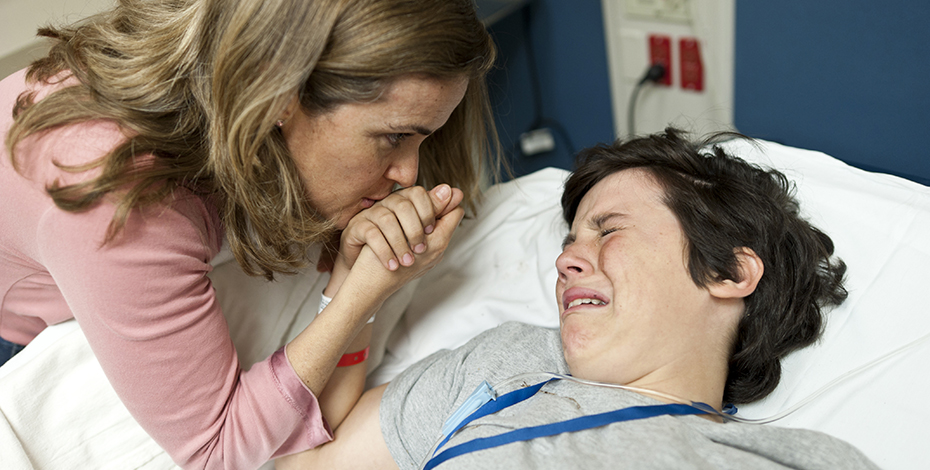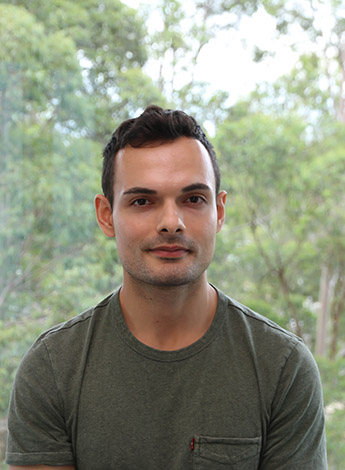
Screening for neuropathic pain in children

PHYSIOTHERAPY RESEARCH FOUNDATION Melissa Trudinger talks to Seeding Grant recipient Dr Emre Ilhan about his study looking at whether common screening tools for neuropathic pain can be validated for use in children.

$11,718 PRF Seeding Grant
Neuropathic pain is caused by conditions affecting the somatosensory nervous system.
While it is well documented in adults, it is difficult to detect in children and adolescents and there is a lack of screening tools specifically validated for use in the paediatric population.
'We know about neuropathic pain in adults, but we don’t know much about neuropathic pain in children,’ says Dr Emre Ilhan APAM, a researcher at Macquarie University whose training in both psychology and physiotherapy has led him to pain research.
Emre says that when he first started thinking about neuropathic pain in children, he looked for information in the literature about its prevalence.
He discovered that the presence of neuropathic pain had not been well documented in this population—in fact, most clinicians considered it to
be extremely rare—and furthermore, the standard screening tools used to assess neuropathic pain in adults had not been validated for use in children.
The reference standard for diagnosis of neuropathic pain in adults is the Neuropathic Pain Special Interest Group (NeuPSIG) criteria, a diagnostic algorithm that draws on a combination of patient history, risk factors and physical testing to assess the likelihood that pain is neuropathic in origin.
However, the NeuPSIG reference standard is a complex process requiring imaging, history-taking, physical assessments and other aspects that might not be easily performed on paediatric patients.
‘It got me thinking about how to move forward in this area.
'Can we validate screening tools for use in children? In the adult population, we have a lot of screening tools including questionnaires that patients can fill out to tell them whether they should get further testing done by a specialist,’ Emre says.
One of these screening tools is the self-reporting version of the Leeds Assessment of Neuropathic Symptoms and Signs pain scale (S-LANSS), a freely available test that has been studied and evaluated in adults.
While it has been used in children, it has not been validated for its diagnostic accuracy and clinical utility.
Emre was recently awarded a Physiotherapy Research Foundation Seeding Grant for a study that aims to validate the use of S-LANSS in children.
The study will also evaluate a simple bedside sensory testing protocol in comparison to performing the NeuPSIG reference standard protocol with modifications for use in children and adolescents with pain.
The study, which is waiting for ethics approval, will include 170 children aged between eight and 17 who have had pain for at least one month and who have risk factors for neuropathic pain, including cerebral palsy, diabetes and recent surgery or cancer treatment.
The first part of the assessment will include an S-LANSS questionnaire, which can be completed by the child with the assistance of their parent or carer as required.
The second part, which will evaluate the use of the NeuPSIG reference standard, includes both a questionnaire/history conducted via a face-to-face interview and a quantitative sensory testing (QST) protocol that has been validated and modified for use in children, along with a bedside version of the QST.
Patients will do both in a randomised order, with each version of the QST administered by a different clinician.
The clinicians will be blind to each other’s results, to the initial S-LANSS self-test and to the order of the QST testing.
'We know about neuropathic pain in adults, but we don’t know much about neuropathic pain in children.'
DR EMRE ILHAN APAM
Emre says the reason for testing a bedside version of the modified QST is to make it even easier for a physiotherapist to conduct the assessment.
‘I’ve always kept it in the back of my mind—if I validate something, can an average physiotherapy clinic perform this type of assessment if a child comes in with pain and they suspect that it’s neuropathic?
'So, alongside the modified QST, I’ll be checking whether everyday items like a toothpick, a cotton bud or even a bit of finger pressure are just as good as the child-friendly QST protocol.
'Are they accurate in detecting the neuropathic signs?’ he says.
Ultimately, Emre hopes to identify the best way to use these tests in the paediatric setting, including the amount of assistance children of different ages require, the language used and so on.
‘If the S-LANSS is validated for paediatric use, it would mean that children and their families could complete the test online to see if they needed further testing to confirm neuropathic pain,’ he says.
A validated test for neuropathic pain would also be useful to pain researchers studying pain in children, Emre says.
© Copyright 2025 by Australian Physiotherapy Association. All rights reserved.





